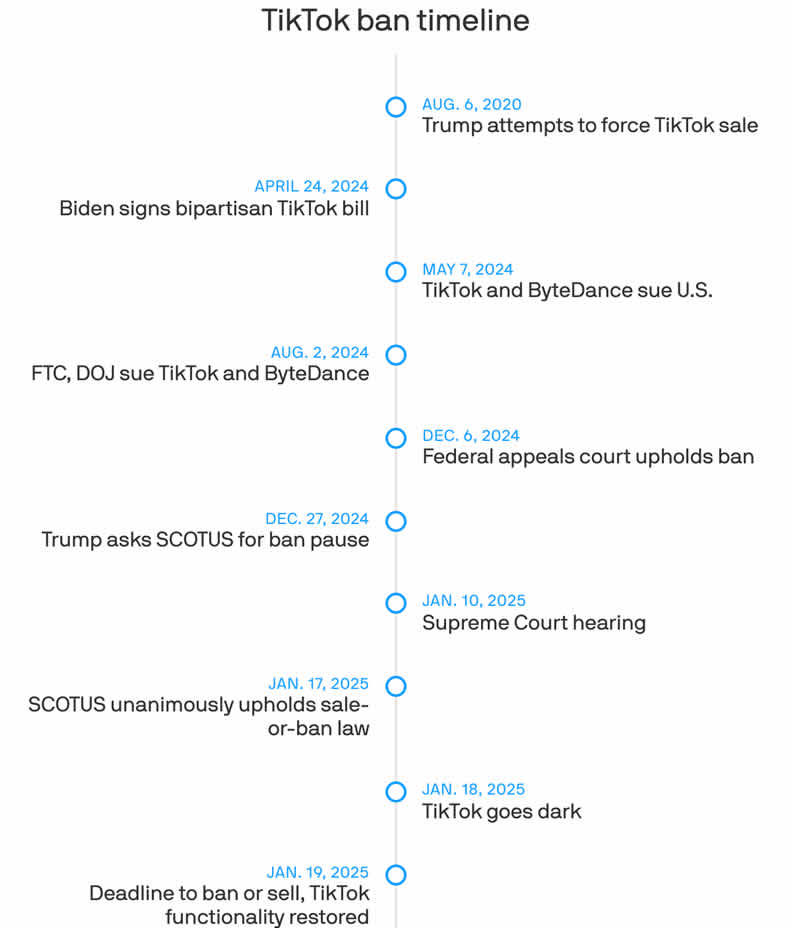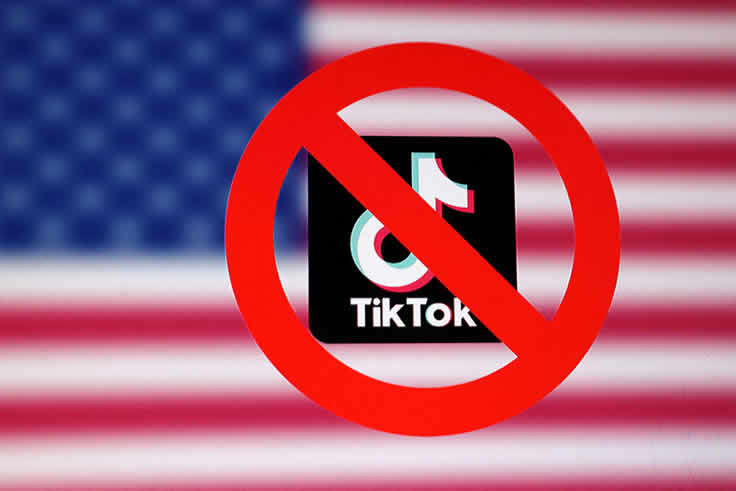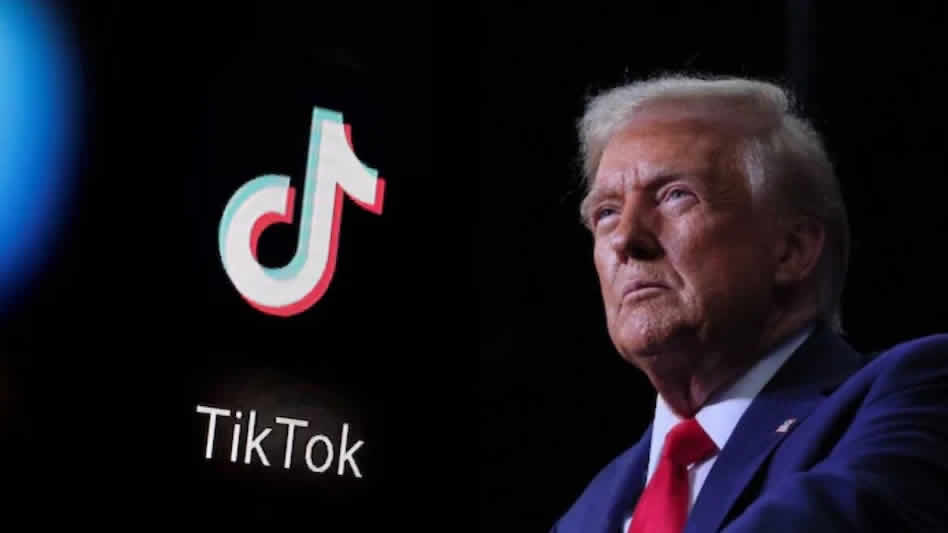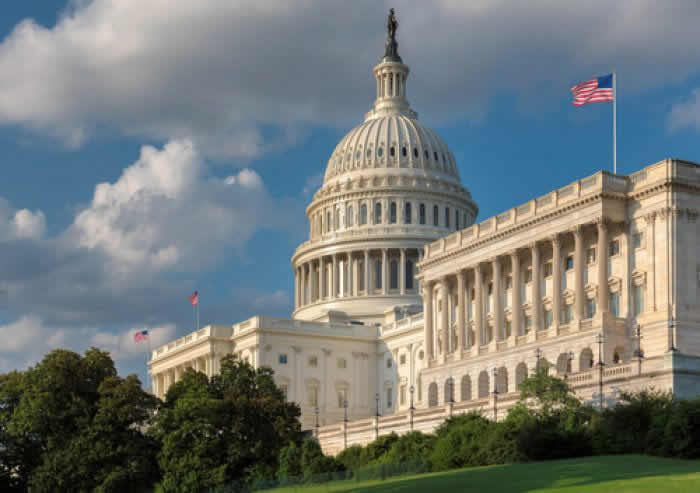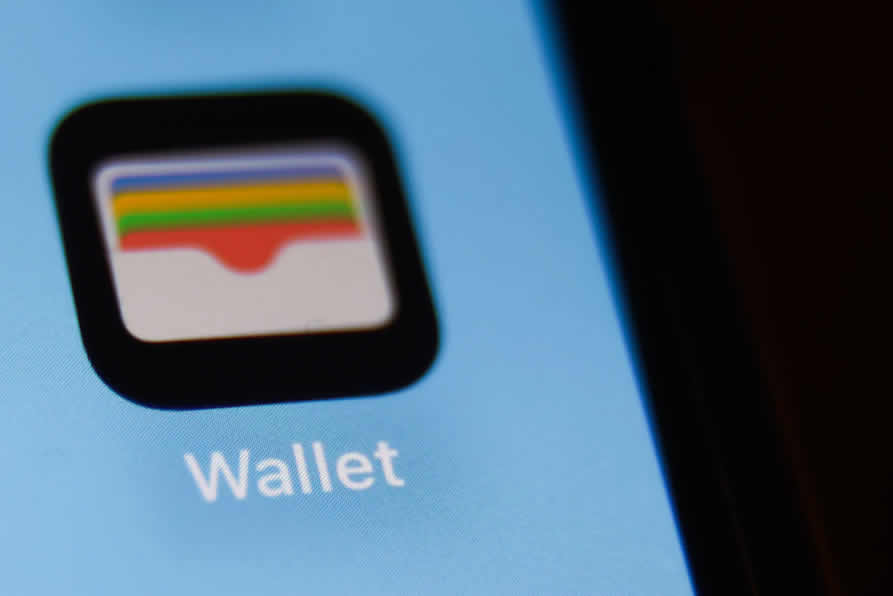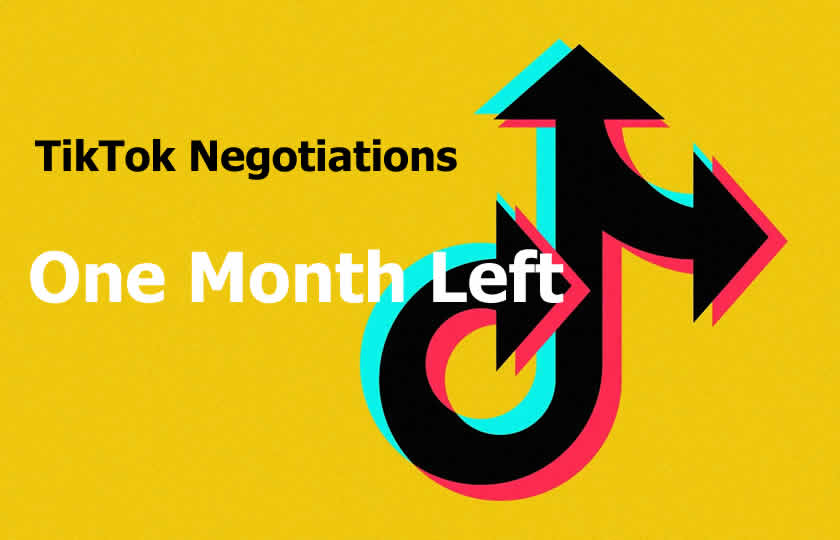
TikTok has less than one month until its U.S. lifeline expires, but sources say there still haven’t been negotiations between its Chinese owner and prospective buyers.
State of play: Suitors are increasingly frustrated by their inability to get under TikTok’s hood, in terms of both finances and technology.
- There also has been some confusion as to who is actually in charge of Trump administration negotiations for the deal. Early expectations were that it would be Treasury Secretary Scott Bessent, given his role as chairman of CFIUS, but Vice President Vance seems to have taken the baton.
- Beijing, meanwhile, continues to be publicly silent; one source suggested the situation is like juggling four balls when one is invisible.
- Everyone has ideas of how a deal could be structured, but no confidence on how it needs to be structured.
Silver lining: The April 5 deadline isn’t really set in stone.
- President Trump had no legal authority to extend the U.S. ban by 75 days, so there’s no reason to think he wouldn’t extend it out further (or even indefinitely).
- But his hand would be helped if at least a term sheet were submitted, since that could trigger a legal extension under the law passed last year.
- There’s also a proposal from Sen. Markey (D-Mass.) to push back the deadine by another 270 days, although it’s stuck in legislative limbo.
ALSO READ
Mastering Meta Ads: The 5 Essential Metrics Every Marketer Needs to Track (2025 Beginner’s Guide)
The intrigue: Trump has publicly floated the idea of a U.S. sovereign wealth fund buying TikTok, and Reuters yesterday reported that former Morgan Stanley tech banker Michael Grimes has been tasked with leading a U.S. SWF.
- A lot of folks view this endeavor as quixotic, given that the U.S. is deep in debt, but Grimes is a serious guy with a history of pulling off difficult assignments (e.g., Uber IPO, Twitter takeover, etc).
- It’s possible that the TikTok slow walk is giving Grimes more time to put Trump’s plan into action.
Be smart: Another possibility is that TikTok will be used as a bargaining chip in the U.S.-China trade disputes.
The bottom line: A tentative agreement could absolutely be signed within the month, but the odds grow longer with each passing day.
